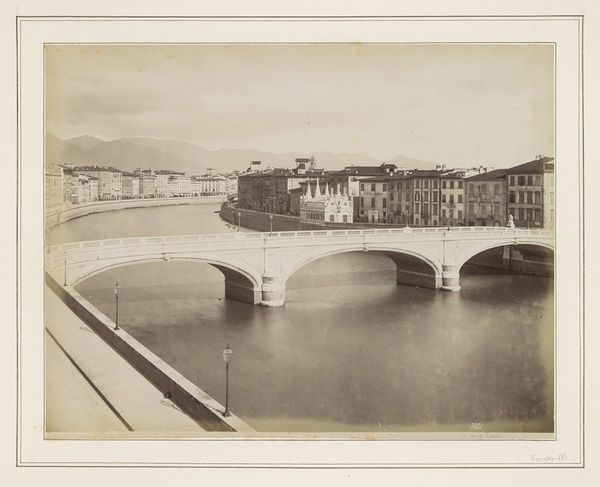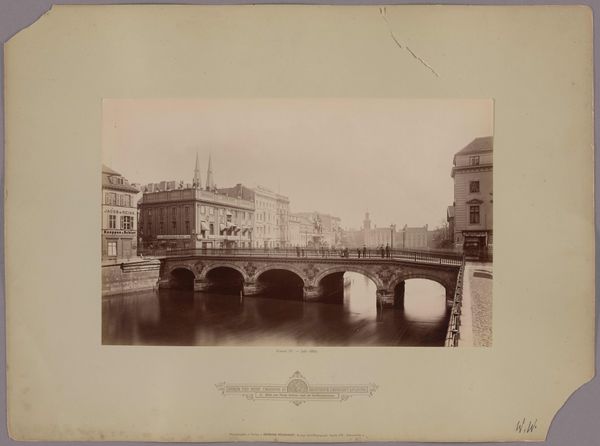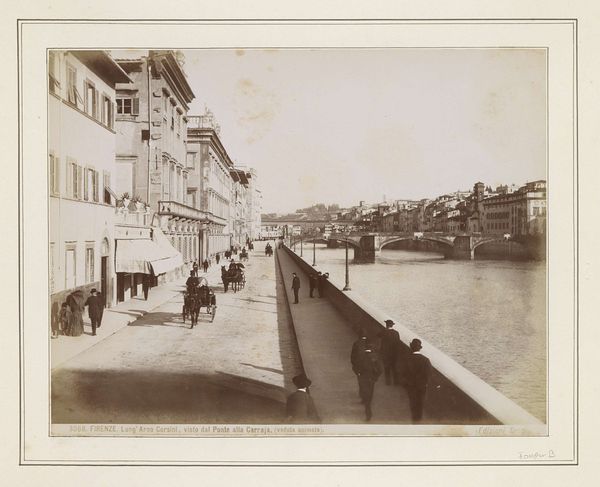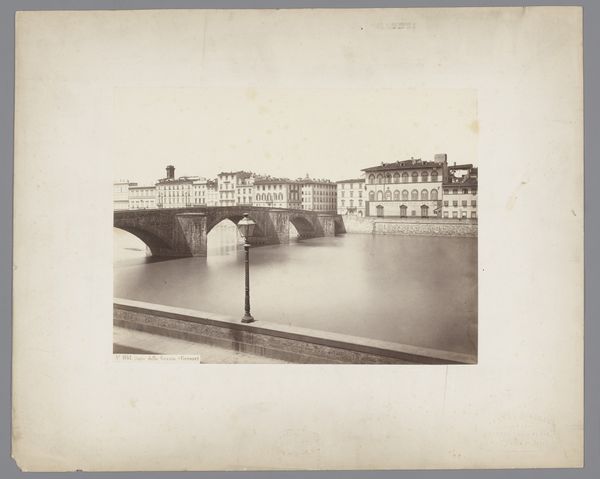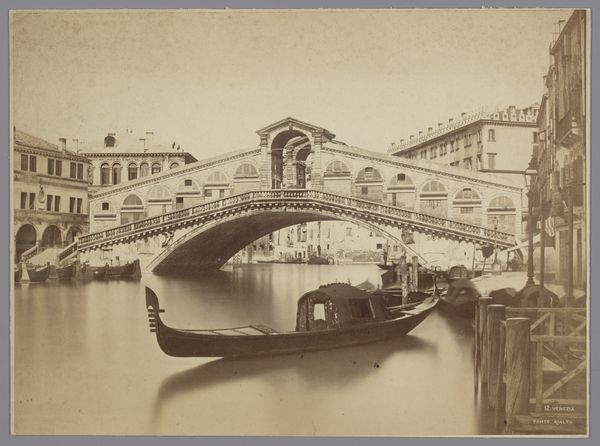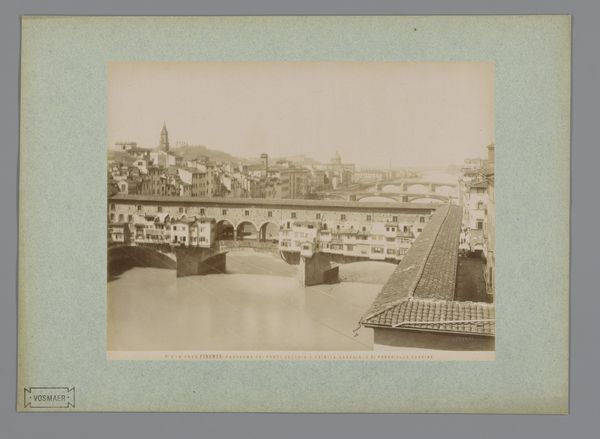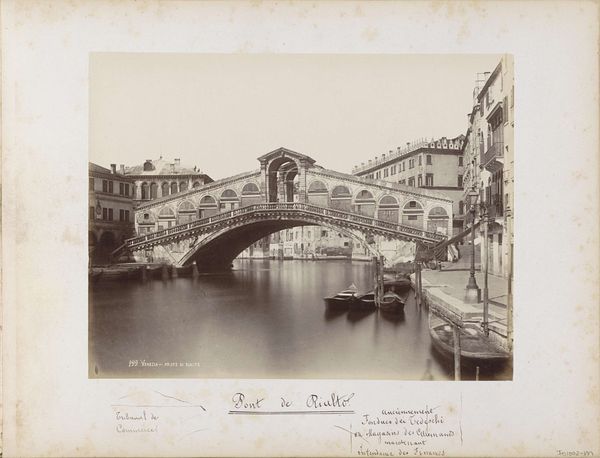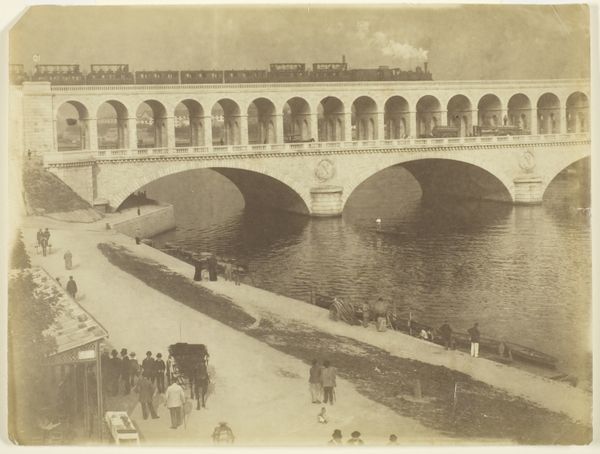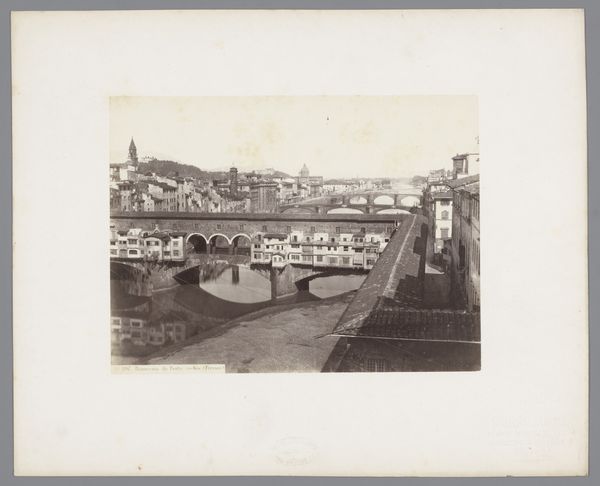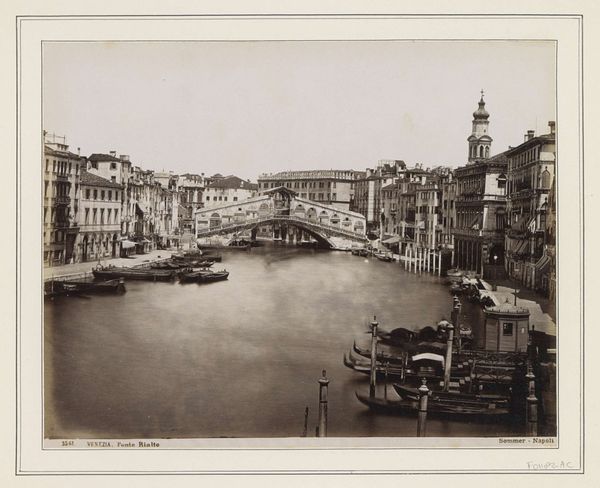
Dimensions: height 188 mm, width 254 mm
Copyright: Rijks Museum: Open Domain
Curator: Enrico van Lint's "View of the Quay along the Arno in Pisa, Italy" is an albumen print, placing it firmly within the technological developments of mid-19th century photography. It was made sometime between 1850 and 1879, and is currently held at the Rijksmuseum. Editor: The muted sepia tones give the scene a dreamlike quality. The light seems diffused, almost ethereal, lending the cityscape a gentle romanticism. It makes me wonder what the air felt like then. Curator: The albumen process itself is fascinating. Imagine the labor involved in coating the paper with egg white and silver nitrate. It was a relatively stable and accessible medium. It speaks to a democratization of image-making, moving beyond the exclusive realm of painting. These photographers provided a critical service, creating historical documents as the city changed and developed. Editor: That's true, but consider the choices van Lint made in framing this shot. The Arno is so central; it practically bisects the image. The composition emphasizes the division between spaces, those solid buildings representing permanence and power along with that constant ebb and flow. Also, who had the time and the money to go on trips such as this? Who would've been allowed into Pisa at that time? These are not unbiased depictions of reality, there's so much encoded class politics within this one image. Curator: I take your point. We shouldn't ignore the context in which the artist lived and worked. Even the angle, which suggests the vantage point from a more elevated setting shows how photography was adopted by certain social classes. How could access and technological skill dictate representation of a scene? The production of this photograph as a tangible object is integral to the art itself and something lost in the contemporary world of mass images and phone snapshots. Editor: It brings questions about progress and visibility to the forefront. Looking at that water, I also feel there’s a timelessness that surpasses Van Lint, and the period in which he was taking the photograph. These questions endure for the simple reason that we’ve made precious little headway since that time. Curator: So much about art, in every era, seems to circle back to those core tensions – between technology, labor, identity and vision. Thank you for bringing your sharp vision to this analysis. Editor: My pleasure! Let's keep questioning.
Comments
No comments
Be the first to comment and join the conversation on the ultimate creative platform.
